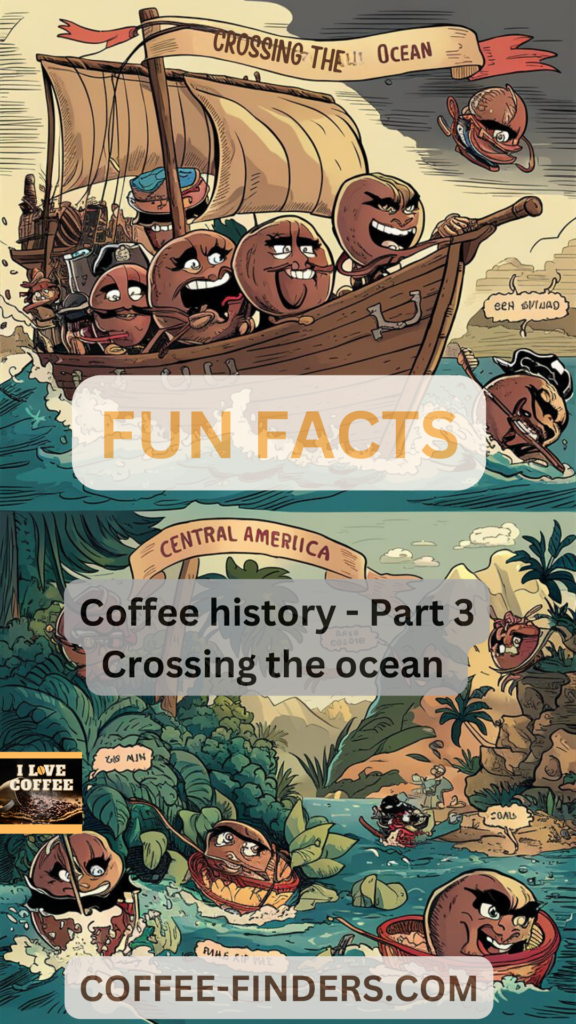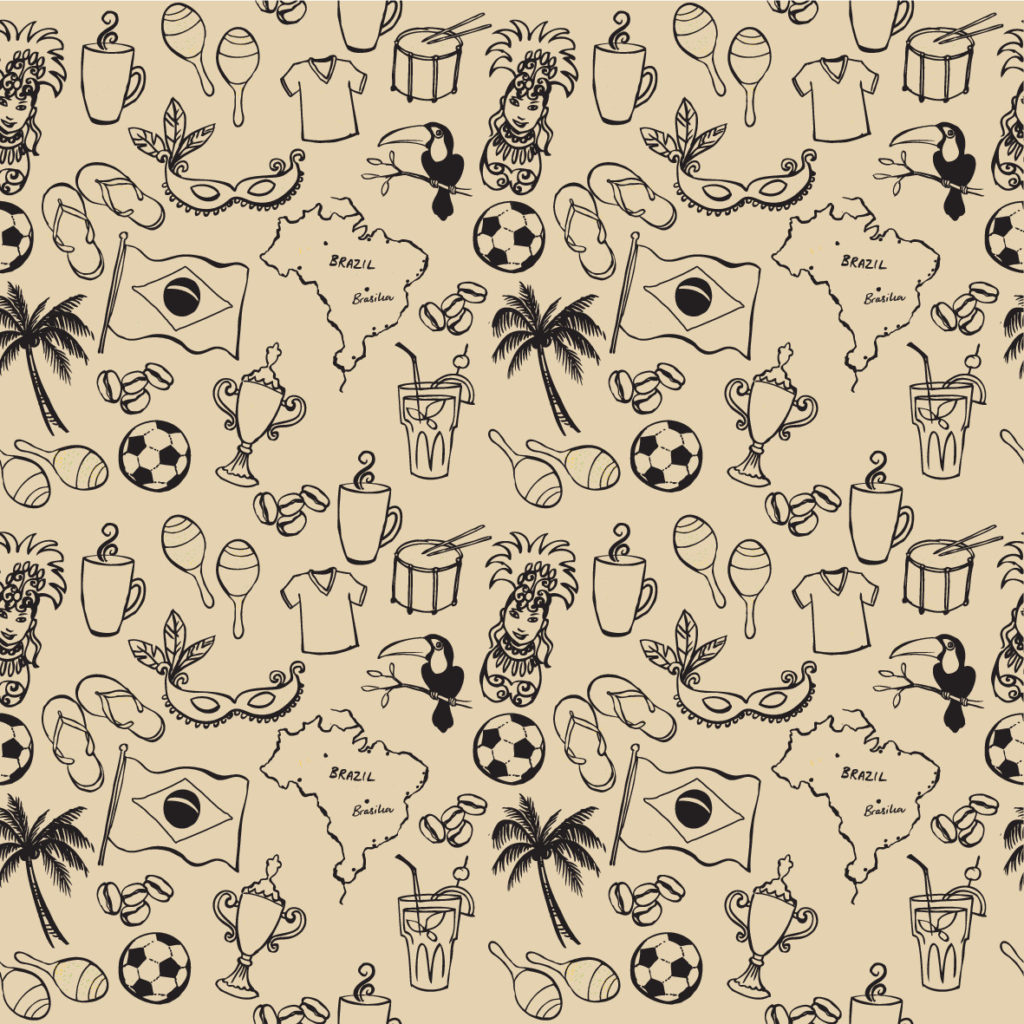Where do coffee bean come from? That is what we are trying to find out in this series in 3 parts.
In the previous chapters, it was noted how the coffee bean began as a lowly shrub barely noticed by people for centuries. By the 12th century, notable changes were being made. The coffee shrub began to provide much more than an ancient form of “energy-power bar” for the goat herders.
It was then discovered that the beans provided an energizing infusion creating an ever-growing crowd of addicts craving more and more.
In this blog post we will look at the following:
Part 3 of Coffee: The Bean That Conquered The World
No one could ever get enough.. The coffee bean took this opportunity to spread its power throughout the globe. Nothing less than complete world domination became its prime objective.
Chapter 1 revealed the beginning of where the coffee bean comes from, and how coffee expanded its dominance from Ethiopia to the Ottoman Empire. From there it spread out to India and all of Europe. It also touched on the beginnings of Dutch colonialism and how the ever-ambitious plant took advantage of the Dutch East India Company to take root in Indonesia.
A very interesting coffee market is the Vietnam coffee. You can learn more about that and some Vietnamese coffee brands here. On my coffee blog, I try to cover coffee from all corners of the world.
This chapter is titled: “World Domination, At Last!”
Chapter 3 on this “Where do coffee bean come from”, focuses on how the devious bean allied with other European colonizers and conquerors to complete its own goals of world dominance. If you are interested in coffee from Europe, see my European coffee brands article.
Continue reading the entertaining history of “The Bean That Conquered the World”.
Dutch Indonesia Becomes The New Coffee Capital
As previously mentioned in Chapter 2, our heroic bean allied with the Dutch East India Company to begin its global expansion. In 1696 coffee production began at a serious pace in Java. In 1707 more expansion of producing areas was needed in Indonesia.
In short order, the coffee bean felt right at home in this new land.
Into coffee but not sure about the best ground coffee to water ratio?

Thanks to the wisdom and experience that the Dutch botanists in Amsterdam accumulated previously in their greenhouses, the quality of these beans was duly noted earning the highest prices in the auctions held in Amsterdam each year. The “typica” variety was the centerpiece of Java coffee at the time.
The bean’s thirst for more power continued to keep pace with the thirst for more of its beverage worldwide. Hence, by 1726, the island of Java filled Europe with 2,145 tons of coffee. Java became the new Coffee Capital of the World, leaving Mocha in 2nd place.
So popular are these two coffee regions that the words “java” or “mocha” are synonymous for coffee. The Mocha-Java blend continues to be one of the most popular blends in the world today.
From Java to Dutch Guiana (Suriname) and French Guiana
Pleased as punch for its immeasurable achievements “coffea arabica” enjoys an euphoric sensation. There is no stopping it now. Its aspiring ally, the Dutch Empire, shares the dream of expansion. Eying up the colony in Dutch Guiana (Suriname), the ground is laid for further growth. This time in South America.
By 1719 the time was right to send some “typica” seedlings to Dutch Guiana. As expected our fertile friend felt right at home spreading its roots throughout the region.
Although humans maintain divisions, boundaries and protective borders, our determined dynamo has no restrictions or loyalties to any one nation.
The goal is world dominance, there are no rivals. Any nation or persons willing to support its mission is an ally.
Not surprisingly then, by 1722 the neighboring French Guiana was soon enjoying a special relationship with the bean and its production.
Click here for some funny facts about coffee.
From Java to France to Martinique, Central America and Gran Colombia
The little bean with mammoth aspirations insisted on its growing expansion. Another opportunity presented itself in 1714.
At this time the Mayor of Amsterdam presented a young coffee plant of the “typica” variety to King Louis XIV of France. It was placed and looked after in the Royal Botanical Garden in Paris.
The imprisoned shrub needed to escape the prison walls of the Botanical Garden and find new areas to conquer. Its chance at freedom appeared in 1721 at the hands of a French naval officer named Gabriel Mathieu De Clieux.
Where do coffee bean come from – Across the Atlantic
It was “Murphy’s Law” in action

This was no ordinary subservient for the grateful grain. De Clieux proved to be loyal beyond the regular call for duty.
Thanks to his remarkable steadfastness the plant was able to survive a most horrendous trip across the Atlantic.
Indeed, the shrub would have been lost if it were anyone else who was handed the task of transporting the shrub to Martinique.
The voyage was disastrous to say the least. It was “Murphy’s Law” in action. At first a crew member with motives unclear, did all in his power to destroy the plant, even going so far as to rip off a branch.
The ship had to survive a frightening storm which almost sank her. Then there was the adventure of avoiding marauding pirates. Last but not least, water rations for the crew.
Feel free to pin the image to find it later!
DeClieux was without a doubt one of the most steadfast and determined coffee lovers in history. For about a month he shared his water rations with the fledgling plant, keeping it safe and alive.
Finally, the traumatized bush was able to spread its roots in the very fertile and welcoming soil of Martinique. So pleased with its new home under the care and direction of its French allies, the coffee empire could multiply throughout the vast lands of Central and Northern South America. And it was a great success! Coffee from the Caribbean is still very popular and enjoyed all over the world.
Brazil, The Final Frontier

With centuries of experience under its belt, the omni-observant shrub is quick to recognize and capitalize on all chances of growth.
A marvelous opportunity came its way in 1727 in French Guiana. Sergeant Major Francisco de Melo Palheta from neighboring Brazil proved to be the perfect instrument for the task.
You may know Brasil for football and beaches. But chances are that you have been drinking coffee from Brasil too.
According to legend, the Sergeant Major was dispatched to settle a land dispute between French Guiana and Dutch Guiana. He also had a hidden agenda, that of smuggling out the coveted coffee plants. That would be no easy task since the valuable plants were so heavily guarded.
The story reports an amorous relationship between the Sergeant Major and Madame D’Orvilliers, the wife of the Governor of Cayenne. The Sergeant Major exploited the relationship to achieve the goal of smuggling the seedlings into Brazil.
The legend may be disputed for its details. However, what is undisputed is that the Sergeant Major has been credited for introducing thousands of seedlings to Northern Brazil. At last, the Mighty Bean concluded its long-time mission of global expansion. The First Wave has been completed. It was now time to begin the 2nd Wave: “Enslavement”.
Read my Ninja Hot And Cold Brewed System CP307 Review
Where do coffee bean come from – Conclusion
I hope you have enjoyed the story on where do coffee bean come from, part 1, 2 and 3. Here you can read about the future of coffee 2.0. This is progress, but is it better?
Who can deny the extensiveness and value of the “lowly” coffee bean? It is truly remarkable that such a small plant could have such a hold on the entire planet. Many people throughout the world cannot imagine a day without a cup of coffee.
Thankfully, we don’t need to imagine that dreadful scene. The “Mighty Bean” ensured that there would be enough for everyone.
Under Its Thumb
How extensive is the power of this exhilarating elixir? Here are some interesting coffee facts:
- According to the International Coffee Organization Global coffee production in 2019/20 is estimated at 168. 84 million bags of 60 kilograms each. That is: 10,134,400,000 kilos of coffee each year.
- After water, coffee is the second most consumed beverage. It is estimated that consumers drink 2.6 billion cups of coffee, every day worldwide.
- Today, there are approximately 25,000,000 coffee producers strapped in poverty in their own countries. It is estimated that about 100,000,000 people are employed in the agricultural part of the industry in the producing nations.
- Between 600 million and 800 million people worldwide are employed somewhere in the coffee industry — or equivalent to at least 10 percent of the world’s population.

